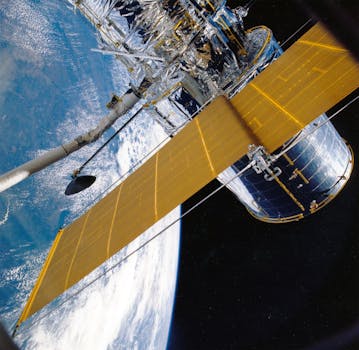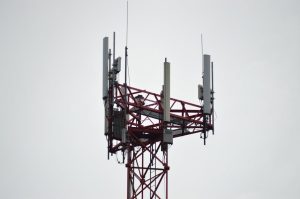
The future of satellites is revolutionizing global connectivity, and it all starts with the Focus Keyword: Satellites. Satellites have been a crucial part of modern technology for decades, providing essential services such as navigation, communication, and weather forecasting. However, the future of satellites is set to be even more exciting, with advancements in technology and innovation leading to improved global connectivity and new opportunities for space exploration.
One of the most significant developments in the future of satellites is the launch of satellite constellations. These constellations consist of thousands of small satellites that work together to provide high-speed internet connectivity to remote and underserved areas around the world. Companies such as SpaceX, Amazon, and OneWeb are leading the charge in this area, with plans to launch tens of thousands of satellites in the coming years. This will not only improve global connectivity but also provide new opportunities for businesses, governments, and individuals to access the internet and communicate with each other.
Another area of development in the future of satellites is the use of advanced materials and technologies. New materials such as carbon fiber and advanced composites are being used to build lighter and more efficient satellites, while technologies such as 3D printing and artificial intelligence are being used to improve satellite design and operation. This will enable satellites to be built and launched more quickly and at a lower cost, making them more accessible to a wider range of organizations and individuals.
In addition to these developments, the future of satellites also holds great promise for space exploration. With the use of satellites, scientists and researchers will be able to study the universe in greater detail than ever before, gaining new insights into the nature of space and the universe. Satellites will also play a critical role in the exploration of other planets and celestial bodies, providing essential communication and navigation services for spacecraft and astronauts.
The future of satellites is also closely tied to the development of other technologies, such as the Internet of Things (IoT) and 5G networks. As these technologies continue to evolve and improve, they will rely increasingly on satellites to provide connectivity and communication services. This will create new opportunities for businesses and individuals to access and use these technologies, and will help to drive innovation and economic growth.
Despite the many advantages and opportunities presented by the future of satellites, there are also challenges and risks that must be addressed. One of the most significant concerns is the issue of space debris, which poses a risk to satellites and other spacecraft. As the number of satellites in orbit increases, so does the risk of collisions and other accidents, which could have serious consequences for the environment and for human safety.
To address these challenges, governments, businesses, and other organizations will need to work together to develop and implement new regulations and standards for the use of satellites. This will include rules for the launch and operation of satellites, as well as guidelines for the responsible use of satellite technology. By working together and addressing these challenges, we can ensure that the future of satellites is safe, sustainable, and beneficial for all.
In conclusion, the future of satellites is a rapidly evolving and exciting field, with many opportunities for innovation and growth. From the launch of satellite constellations to the use of advanced materials and technologies, the future of satellites holds great promise for improving global connectivity and driving space exploration. As we look to the future, it is essential that we address the challenges and risks associated with satellite technology, and work together to develop and implement new regulations and standards for the use of satellites.
See more:

